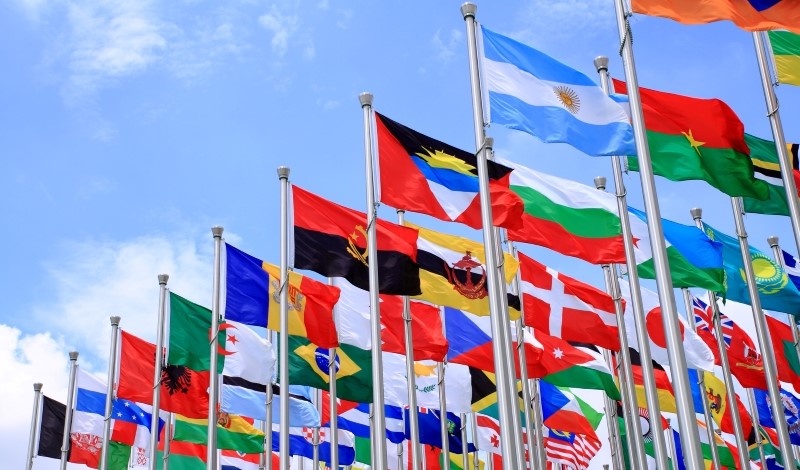
With new development finance definitions, the OECD seeks to enhance accountability in tracking foreign aid.
According to official statistics, countries around the world have reached an all-time high in their displays of generosity toward each other.
Recent data from the Organization for Economic Co-operation and Development (OECD) shows that flows of official foreign aid rose to a record level of $204 billion in 2022, representing an almost 14 percent increase over 2021 figures.
The OECD and other international organizations, however, are currently working to clarify what counts as “official” foreign aid, technically termed official development assistance. These global organizations are collaborating on new definitions and standards to bring greater accountability and transparency to the work of international development.
In 1969, member countries of the OECD’s Development Assistance Committee first created a workable definition for “official development assistance.” With this definition, OECD member countries could consistently track whether their foreign aid was going where it was most needed.
This definition has lasted for more than 50 years. But as different kinds of institutions have created more ways to finance international development, these new sources of development assistance have introduced complications for measuring official amounts of foreign aid.
For example, foreign aid from bilateral agreements and non-governmental organizations were common under the original definition. Since then, development finance institutions, regional development banks, export credits, private philanthropy, and household remittances all comprise major sources of foreign aid that were not envisioned in 1969.
As sources of foreign aid have become more complex, the OECD has increasingly stepped in to ensure that foreign aid actually achieves its stated goals. It accomplishes this by evaluating international development projects as well as producing reports of where development assistance is actually going.
Through its Development Assistance Committee, the OECD also produces rules that govern how member countries can deploy development assistance and foreign aid. These rules serve a crucial oversight function, as substantial amounts of foreign aid are lost every year to corruption or are wasted because of mismanagement.
Although the Development Assistance Committee sets rules for member countries, it does not handle the resolution of illicit financial activity in aid-financed projects, such as rent-seeking, bribery, or corruption. Instead, the OECD relies on its member countries’ own judiciary systems to hold actors accountable, and these legal processes and outcomes vary considerably across countries and contexts.
Clarifying which sources of foreign assistance ultimately count as “official,” therefore, can bring more consistency to the prosecution of illicit financial activity when it is discovered in aid-financed projects. In addition, these standard-setting efforts can help the OECD foster greater accountability in the work of international development when it makes final calculations for official development assistance figures every year.
As a response to this evolving and increasingly complex environment, the OECD is working to modernize its statistical measures of official development assistance to “reflect the new global development landscape,” as well as to encourage more development spending and “improve its targeting.”
This modernization process began in 2016. Between 2016 and 2018, the OECD clarified that official development assistance would include the costs of civilian, police, and military peacekeeping operations for countries receiving new migrants or refugees.
Later in 2019, the OECD announced that it would begin calculating official development assistance according to a new statistical method called “the grant equivalent.”
According to the organization, the grant equivalent provides a fairer method of recording official development assistance by counting grants differently from loans. This change is based on the OECD’s finding that loans with more generous interest rates and longer repayment terms are a larger effort than those with higher interest rates and shorter terms.
Under the grant equivalent method, the more generous the donor country’s loan terms, the higher the official development assistance value will be. This method, therefore, will “better reflect the actual effort by donor countries,” according to the OECD.
The OECD’s modernization efforts have also addressed how debt relief for indebted countries counts as official development assistance, as well as the role of various private sector investment tools—such as equity investments and “mezzanine financing”—in foreign aid.
And most recently, in 2021, the OECD partnered with the United Nations Development Program to create new sustainable impact standards that focus on aligning private investment activity with the U.N.’s sustainable development goals.
These impact standards provide potential foreign investors with a “best practice guide and self-assessment tool” for navigating the world of foreign aid. Over the long run, the U.N.’s sustainable impact standards seek to cultivate a “high level of quality when deploying public resources for development objectives.”
For example, sustainable impact standards can help foreign investors and donor countries evaluate how well their investments and development projects comply with human rights laws, labor laws, and environmental regulations at both the national and international levels.
In addition, the OECD-U.N. guidance suggests that if development financing sources can meet new impact standards, these financing sources might achieve a “quality stamp” in the eyes of other financial institutions and private investors.
Throughout 2023, however, foreign aid efforts will likely remain focused on getting humanitarian assistance into conflict-affected areas of Ukraine. Already this year, nations across the world have shown such a priority, with the majority of foreign assistance going toward Ukrainian military and financial support.
And amid these displays of altruism, the OECD will likely remain focused on strengthening the accuracy of the measurements of this foreign assistance.
Ultimately, the OECD’s reforms could help to improve the understanding of various kinds of development spending for nations, investors, and the world at large. These definition-setting initiatives represent a concerted effort to center transparency and accountability within the work of foreign aid, humanitarian assistance, and international development.



